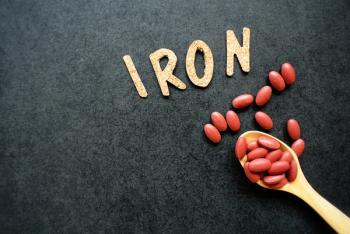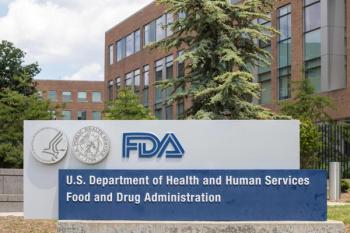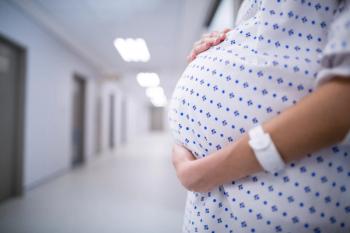
Does ART failure signal CVD risk?
A study looks at the impact of failed ART on the cardiovascular health of women. Plus: Does a pregnancy near the time of breast cancer lead to worse outcomes. Also, a look at how many women may have little to no access to fertility services.
Failure of assisted reproductive therapy (ART) may be a sex-specific risk factor for cardiovascular disease (CVD), according to results of a new study by Canadian researchers. The correlation was particularly striking, say the authors, among women with a prior miscarriage.
Published in
Among the 28,442 women included in the study, 9,349 (32.9% gave birth and 19,093 (67.1%) did not. The annual rate of cardiovascular events was 19% higher in the women who did not give birth after ART than among those who did (1.08 vs 0.91/100 patient-years, P<0.001), which is equivalent to a 21% relative increase in the annual rate (95% confidence interval 13% to 30%).
Looking at age, number of infertility cycles, type of infertility and history of prior miscarriage, the authors found that only miscarriage accentuated the risk of CVD associated with failed ART (interaction P=0.06). The absolute risk of CVD, the authors said, was modest and the relative risk was mostly confined to the first 5 years after ART. Limitations of the study included an inability to identify less invasive forms of ART and lack of information on clinical factors such as blood pressure, cholesterol levels, and ventricular function.
“A potential increase in cardiovascular events,” the author said, “may become increasingly relevant with broader utilization of fertility therapy and longer follow-up.” They concluded that further research may be warranted on ART as a sex-specific CVD risk factor so that women undergoing infertility treatment who might benefit from CVD risk evaluation can be identified. Commenting on the findings, Editor-in-Chief Dr Charles Lockwood said, ”The link between failed infertility and CVD may reflect the higher rate of obesity and lipid disorders in the failed group, which in turn may reflect higher levels of insulin resistance.”
Does pregnancy negatively impact breast cancer survival?
According to results of a new study in
Researchers reviewed information in health administrative databases from Ontario, Canada from January 2013 to December 2014, which covered 7553 women aged 20 to 45 years at the time of their diagnosis of invasive breast cancer. Exposure was considered any pregnancy in the period from 5 years before the index date of the diagnosis of breast cancer until 5 years after. The women were then classified into 4 exposure groups: no pregnancy, pregnancy before breast cancer, pregnancy-associated breast cancer, and pregnancy following breast cancer.
Among the women in the study (mean age at diagnosis, 39.1 years; median, 40 years; range, 20-44 years), the 5-year actuarial survival rate was 87.5% for those with no pregnancy (95% confidence interval [CI], 86.5%-88.4%); 85.3% for women with pregnancy before their breast cancer diagnosis (age-adjusted hazard ratio, 1.03; 95% CI, 0.85-1.27; P = .73); and 82.1% for women with pregnancy-associated breast cancer (age-adjusted hazard ratio, 1.18; 95% CI, 0.91-1.53; P = .20). For women who had a pregnancy 6 months or more following a breast cancer diagnosis, the 5-year actuarial survival rate was 96.7% (95% CI, 94.1%-99.3%).
The researchers concluded that pregnancy did not have an adverse impact on survival in women with breast cancer. For women with a breast cancer diagnosis, the risk of death is lowest when pregnancy occurs 6 months or more following diagnosis.
How many women have no access to fertility services?
Nearly 25 million women may have little to no access to assisted reproductive technology (ART) clinics, according to results of a new study in
Researchers from the University of Pittsburgh used data from the most recent US Census to determine the populations of cities, towns, and states, and from the Centers for Disease Control and Prevention to locate the 510 ART clinics across the United States. The main outcome was the number of US women of reproductive age living in areas with no ART clinic, a single ART clinic, or multiple ART clinics.
Multiple ART clinics were located in 76 metropolitan areas with a median population of 1.45 million people, accounting for 442 of the 510 ART clinics. A single ART clinic was found in 68 metropolitan areas with a median population of 454,000 people. According to the 2010 US Census, 38.1 million reproductive-aged women (60.4% of the US population) lived in an area with more than 1 ART clinic; 6.8 million (10.8%) lived in an area with only 1 ART clinic; and 18.2 million (28.8%) lived in an area that had no ART clinic.
The researchers concluded that 25 million (39.6%) women of reproductive-age live in an area that provides either limited or no access to fertility services. They believe that this should spur policy and progress to increase access to ART services.
Newsletter
Get the latest clinical updates, case studies, and expert commentary in obstetric and gynecologic care. Sign up now to stay informed.









